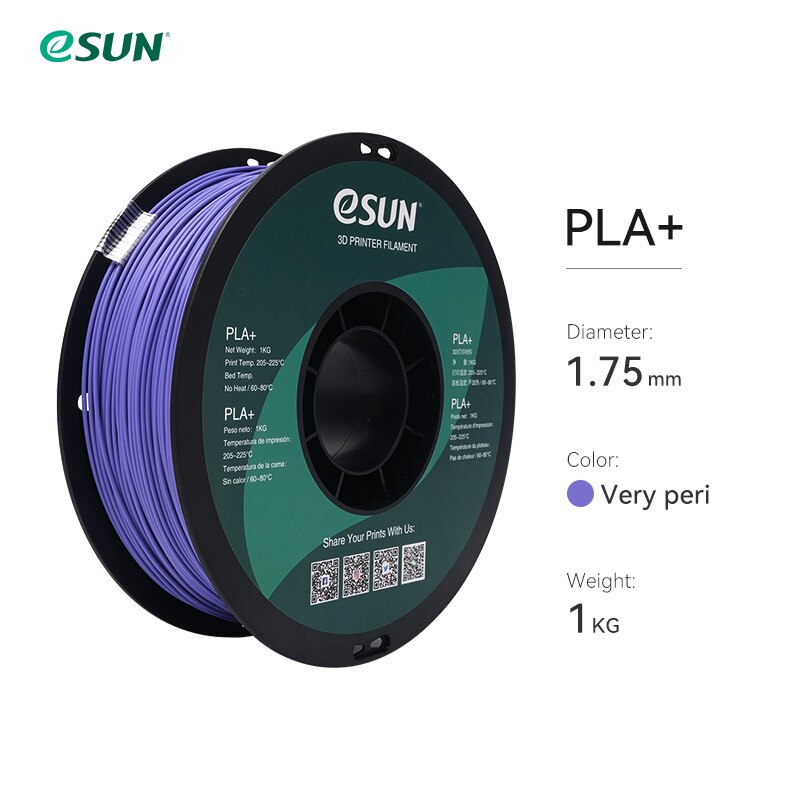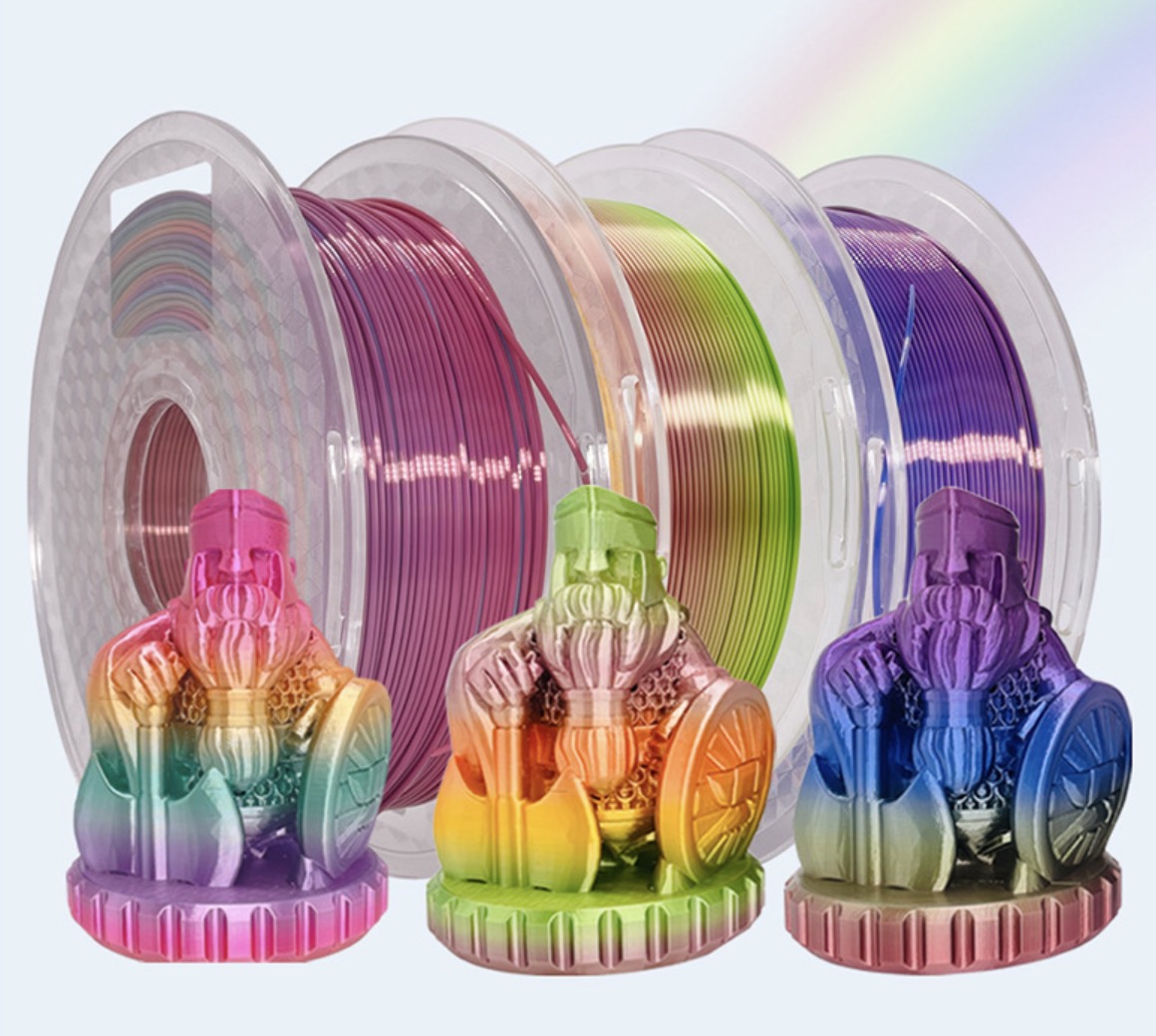Can PLA be used in a dishwasher?
Aug 01,2023 | 3D4Create
I. Introduction
PLA (polylactic acid) is one of the most popular materials used in 3D printing today. Derived from renewable resources like corn starch, PLA is affordable, easy to print, and produces glossy finished prints.
However, PLA has drawbacks when it comes to high heat and moisture resistance. This raises the question - how does PLA fare in a dishwasher? In this article, we’ll examine the properties of PLA filament and assess its suitability for withstanding repeated dishwasher cycles.

eSUN 3D Printer Filament PLA+ 1.75mm 1KG
II. Is PLA Dishwasher Safe?
There are a few key factors that determine if a 3D printed object can survive regular dishwasher cleaning:
1. Heat Resistance
Typical household dishwashers operate at internal temperatures between 140°F and 150°F. PLA’s glass transition temperature, the point where it begins to soften, is between 130°F and 180°F. So prolonged heat exposure in a dishwasher can cause PLA prints to warp or deform over time.
2. Water Pressure
Dishwashers utilize high-pressure spray jets to blast food residue off dishes. This intense water pressure can physically stress 3D printed objects, especially if layer adhesion is weak. PLA is susceptible to fracturing and delaminating under these demanding mechanical forces.
3. Water Absorption
PLA’s porous nature allows it to absorb more water compared to other plastics. When saturated, water acts as a plasticizer - it infiltrates the structure and degrades the material properties. Increased brittleness, layer separation, and distortion can occur.
So while PLA may survive an occasional gentle wash cycle, regular dishwashing introduces heat, moisture, and physical stresses that can quickly deteriorate print quality and performance.

III. Maximizing PLA’s Dishwasher Durability
If you do need to wash PLA prints in the dishwasher periodically, there are several steps you can take to enhance durability:
1. Print at 100% Infill
PLA parts printed at 100% infill are less porous and prone to moisture absorption. A solid structure also better resists fracturing from water jet impacts.
2. Annealing
Heating PLA prints to just below the glass transition temp increases crystallinity, improving heat resistance and interlayer bonding. Caution - too high of a temperature can cause sagging.
3. Dishwasher-Safe Coating
Applying a thin layer of epoxy or PETG-based sealant helps waterproof PLA, preventing interior water damage. Just ensure the coating adequately seals the surface.
IV. Recommended Dishwashing Practices
When washing PLA prints in the dishwasher is necessary, follow these guidelines to minimize risks:
- Wash on the lowest temperature setting available. Prolonged heat exposure degrades PLA.
- Skip heated drying cycles, as this can cause severe warping. Air dry items instead.
- Use short cycles with reduced water pressure. This lessens internal and external stresses on the print.
- Promptly remove prints after washing to avoid heat and moisture damage while sitting.

Premium dishwasher (photo: bellinghamelectric)
V. When to Avoid Dishwashing PLA
While the above tips can extend PLA’s dishwasher life, avoid washing the following types of prints:
- Items with very thin features or walls below 1.5mm thickness
- Objects washed frequently or heavily soiled after each use
- Functional prints needing good heat/moisture resistance and strength
For these applications, choose a more durable dishwasher-safe 3D printing filament like PETG or nylon.

eSUN 3D Printer Filament PLA Matte 1.75mm 1KG
VI. Conclusion
PLA has downsides regarding heat and water resistance that limit its durability in dishwashers. For occasional gentle washes, PLA may survive if printed properly. But for regular dishwasher use, higher-performance filaments are recommended.
Assess your particular application and performance requirements first when deciding if PLA is suitable for the dishwasher. With informed filament selection and printing techniques, your 3D printed objects can better withstand the demanding conditions inside your dishwasher.
FAQS:
Q1: What problems could occur when washing PLA in the dishwasher?
A1: Exposing PLA to dishwasher conditions could cause your 3D printed item to become misshapen, develop cracks, or have layers separate.
Q2: How should you properly clean 3D printed PLA items?
A2: It is best to handwash 3D printed PLA with mild soap and room temperature water. Avoid soaking and don't use abrasive scrubbers. Gently dry with a towel.
Q3: How could I make PLA dishwasher safe?
A3:There are some chemical processes that could strengthen PLA for the dishwasher, but most home-printed objects won't go through these steps. Handwashing is recommended.
See Also
Optimize Your PLA Prints: Settings and Tips for Better Quality
PLA Recycling: Tips and Tricks for Recycling Your 3D Printing Scraps
Getting the Best Results: Optimal 3D Printing Temperatures for PLA, ABS, PETG, TPU, Nylon


